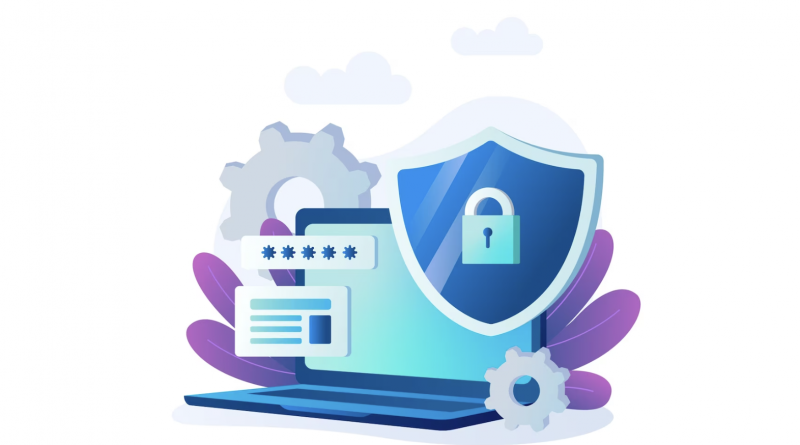ISO 27001 and AWS Security: A Guide to Best Practices in InfoSec
In the era of digital transformation, ensuring the security of our data and digital assets has never been more critical. As organizations migrate to cloud platforms like AWS, adherence to internationally recognized standards, like ISO 27001, becomes paramount. In this blog, we’ll dive into the essence of ISO 27001 and how to apply its principles to secure AWS infrastructure.
What is ISO 27001?
ISO/IEC 27001 is an international standard for information security management systems (ISMS). It provides a systematic approach to managing sensitive company information, ensuring its confidentiality, integrity, and availability. By adopting ISO 27001, organizations demonstrate a clear commitment to implementing, maintaining, and continuously improving their security postures.
ISO 27001 and AWS: Bridging the Gap
AWS has achieved ISO 27001 certification, highlighting their commitment to security best practices. But what does this mean for AWS customers? And how can one ensure their AWS infrastructure adheres to these best practices?
AWS Secure Infrastructure Best Practices
1. Identity and Access Management (IAM)
- Principle of Least Privilege: Grant only necessary permissions for users, groups, and roles.
- Multi-Factor Authentication (MFA): Enforce MFA for all AWS accounts, especially root users.
- Regularly Review and Rotate: Periodically review access permissions and rotate security credentials.
2. Secure Your VPC
- Isolation: Use Virtual Private Cloud (VPC) to isolate resources. Separate workloads using different VPCs or subnets.
- Restrict Inbound and Outbound Traffic: Use Security Groups and Network Access Control Lists (NACLs) to control traffic at the instance and subnet level, respectively.
3. Data Encryption
- At Rest: Use AWS Key Management Service (KMS) to manage encryption keys and enable encryption for data storage services like S3, RDS, and EBS.
- In Transit: Employ SSL/TLS protocols for data in transit. Use AWS Certificate Manager for SSL/TLS certificates.
4. Monitoring and Logging
- AWS CloudTrail: Enable CloudTrail in all regions to monitor API call logs.
- Amazon GuardDuty: Activate GuardDuty for threat detection and receive alerts for unusual activities.
- AWS Config: Monitor changes to AWS resources and maintain a history of configuration changes.
5. Disaster Recovery and Backup
- Regular Backups: Use Amazon S3 for data backup and enable versioning to track and retrieve versions of stored objects.
- Test Disaster Recovery: Regularly test and refine your disaster recovery processes using AWS tools.
6. Compliance Monitoring
- AWS Artifact: Access AWS compliance reports to ensure your environment aligns with ISO 27001 and other standards.
7. Continuous Education
- AWS Well-Architected Framework: Follow the security pillar of the AWS Well-Architected Framework for a comprehensive approach to cloud security.
8. Endpoint Security
- Amazon VPC Endpoints: Use VPC Endpoints to privately access AWS services without using public IPs, thus minimizing the exposure to threats.
- AWS WAF: Implement the Web Application Firewall to protect your applications from web exploits. Customize rules based on your requirements.
9. Infrastructure Protection
- DDoS Protection with AWS Shield: Employ AWS Shield, especially Shield Advanced, for larger DDoS protection, which also offers 24×7 DDoS response and threat intelligence.
- Penetration Testing: Periodically test your infrastructure for vulnerabilities. AWS has policies allowing such tests, but always inform AWS before conducting them.
10. Secure Connectivity
- AWS Direct Connect: Establish a private connection between your on-premises infrastructure and AWS for secure and consistent network performance.
- VPN: Use AWS VPN solutions to ensure encrypted traffic between AWS and your on-premises resources.
11. Data Management and Isolation
- RDS Snapshots: Regularly take snapshots of your RDS instances to backup databases.
- S3 Object Lock: Enable this feature to prevent data from being deleted or overwritten for a fixed amount of time, ensuring data immutability.
12. Secure Application Deployment
- Elastic Load Balancing (ELB): Distribute incoming application traffic across multiple targets, ensuring availability and fault tolerance.
- AWS Secrets Manager: Store, retrieve, and manage secrets such as API keys and database credentials securely.
13. Threat Intelligence
- Amazon Macie: Use Macie to discover, classify, and protect sensitive data by leveraging machine learning to identify potential threats.
- AWS Security Hub: A centralized dashboard to view and manage security alerts and automate compliance checks.
14. Automation in Security
- AWS Lambda: Create automation scripts that react to security events. For instance, if an unauthorized EC2 instance is detected, a Lambda function can be triggered to shut it down.
- AWS Step Functions: Coordinate multiple AWS services into serverless workflows, creating automated, visual workflows for faster threat response.
15. Employee Training and Awareness
- AWS Training and Certification: Ensure your team is up-to-date with the latest AWS practices. AWS offers specialized training in security best practices.
Final Thoughts
Aligning AWS infrastructure with ISO 27001 principles is a journey that requires a blend of technical measures, strategic planning, and continuous improvement. By integrating the expanded best practices listed above, organizations can further fortify their cloud environments and demonstrate an unwavering commitment to information security. Always remember to adapt these guidelines based on the unique requirements and threat landscapes of your sector and organization.


